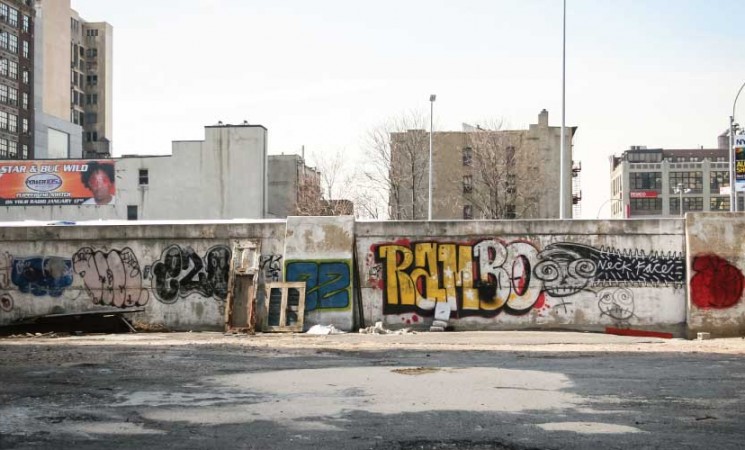Archived Content
The Office of Behavioral and Social Science Research (OBSSR) archives materials older than three years that are no longer updated. This content is available for historical purposes, and the information and links may have changed over time.

Imagine a city. Is it a thriving metropolis with clean and occupied residential areas? Are people leisurely strolling through the neighborhood park? Or is it a concrete jungle with abandoned houses, boarded up businesses, and a flourishing drug trade? The differences have a significant impact on health in ways that are not always so obvious. Evidence suggests that environmental risk may even be a more salient predictor of certain health outcomes than individual-level risk factors. Debra Furr-Holden, Ph.D., recently spoke about how the built environment affects health and her recent work to improve public health in Baltimore. Furr-Holden’s research is focused on upstream structural factors that affect health, such as public policy and the built environment, rather than downstream factors or interventions at the individual level.
Assessing How the Built Environment Affects Health: A Neighborhood Assessment Tool
There aren’t many neighborhood assessment tools to capture information on social determinants of health. One of Furr-Holden’s earliest projects was to fill this gap. Furr-Holden developed the Neighborhood Inventory for Environmental Typology (NIfETy) method for characterizing Baltimore neighborhoods, but its use has expanded to cities across the United States. The inventory assesses seven core domains of the built and social environment, including types of structures and their percent usage, youth activity, and violence levels. Furr-Holden expects that data from the inventory will provide insight to policymakers to better inform future public health intervention efforts.
NIfETy data has already been used to inform policy in Baltimore. There had been a major effort to install surveillance cameras to reduce crime, but NIfETy data showed the cameras were simply displacing crime to blocks without cameras. Researchers also observed an occasional increase in crime when drug dealers moved into other dealers’ territories to avoid cameras, thus igniting turf wars. An introductory paper on the NIfETy method, “The NIfETy Method for Environmental Assessment of Neighborhood-level Indicators of Violence, Alcohol, and Other Drug Exposure,” provides more information.
Reducing the Number of Vacant Houses
Furr-Holden has also tackled the problem of vacant buildings in Baltimore to improve the environment for local residents. In the 1960s, Baltimore had about 1 million residents, but now the city’s population is only about 620,000. Development has been slow because vacant houses often have liens and other problems that make it difficult for developers to take possession of entire blocks. Although Furr-Holden wanted local politicians to address the problem of vacant houses, there was no data to show actual health benefits would result from eliminating them. Therefore, the mayor’s office asked her to establish a sound case for taking up the issue.
Task in hand, Furr-Holden categorized Baltimore neighborhoods based on the number of abandoned houses and whether this number increased or decreased over a 2-year period. She also collected data on youth involvement with drugs. She found that kids living in neighborhoods that saw increases in vacant housing over the 2 years had a 70 percent greater chance of being involved with drugs than kids from neighborhoods in which the number of vacant houses remained the same or decreased. She also found that kids in these problematic neighborhoods were less responsive to interventions, such as a school-based drug prevention program sponsored by the National Institute on Drug Abuse.
These findings demonstrated a relationship between the built environment and a health effect on residents, and thus local politicians were willing to take up the issue of reducing the number of vacant houses in the city. They created the Vacants to Value Program, which streamlines the process to acquire vacant housing. In the years since its inception, the number of neighborhoods that are improving with respect to vacant housing has dramatically increased.
Zoning Enforcement to Reduce Liquor Store Density
Vacant houses are not Baltimore’s only problem. The city has twice the density of liquor stores per capita than the national average. Furthermore, the immediate area around a liquor store often has more violence and crime than other areas. Therefore, Furr-Holden became interested in reducing the number of liquor stores in Baltimore. A 1971 zoning rewrite included measures to curb the number of liquor stores, but the code has been largely unenforced. Furr-Holden has been working with politicians to enforce the code and collect data to inform this process.
Among the data Furr-Holden has collected includes data showing that neighborhoods with the highest life expectancy had 1/10th the number of liquor stores compared to neighborhoods with the lowest life expectancy. She discusses the complex relationship between crime, health, and liquor stores in greater detail in “Achieving a Healthy Zoning Policy in Baltimore: Results of a Health Impact Assessment of the TransForm Baltimore Zoning Code Rewrite.” She also found that Baltimore could avert about 1,000 acts of violence every two years with enforced zoning laws that would reduce alcohol outlet density.
Ultimately, Furr-Holden hopes to conduct further studies of behavioral health inequalities and to develop structural interventions to alleviate these problems. Although most of her work is focused on Baltimore, she is hoping that other groups will copy her methods in other cities.
Additional Information
Listen to Dr. Furr-Holden’s OBSSR lecture.
An introductory paper on the NIfETy method: The NIfETy Method for Environmental Assessment of Neighborhood-level Indicators of Violence, Alcohol, and Other Drug Exposure.
An analysis of the relationship between crime and liquor stores: Achieving a Healthy Zoning Policy in Baltimore: Results of a Health Impact Assessment of the TransForm Baltimore Zoning Code Rewrite.
Photo Credit: Shutterstock/Photoman29








